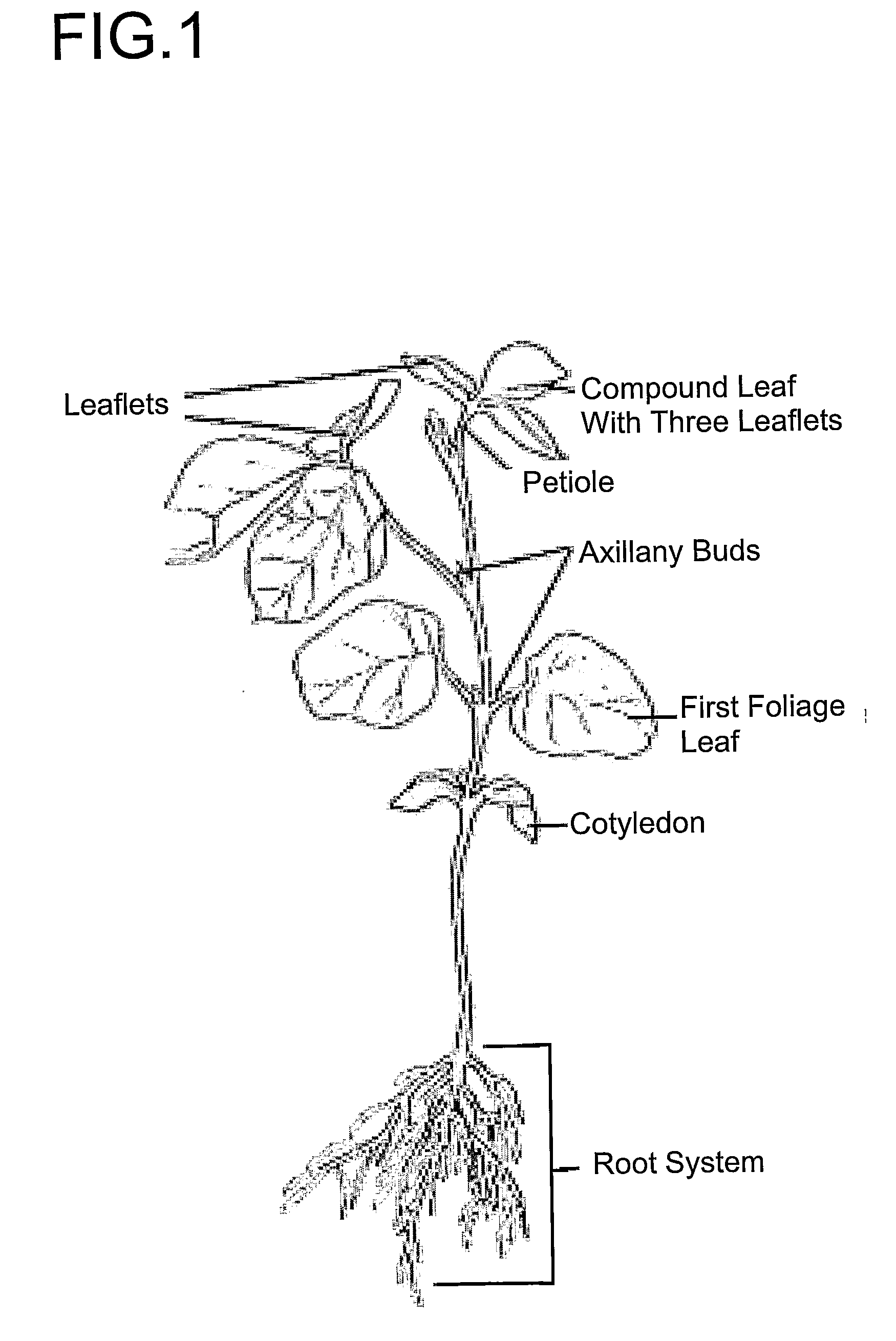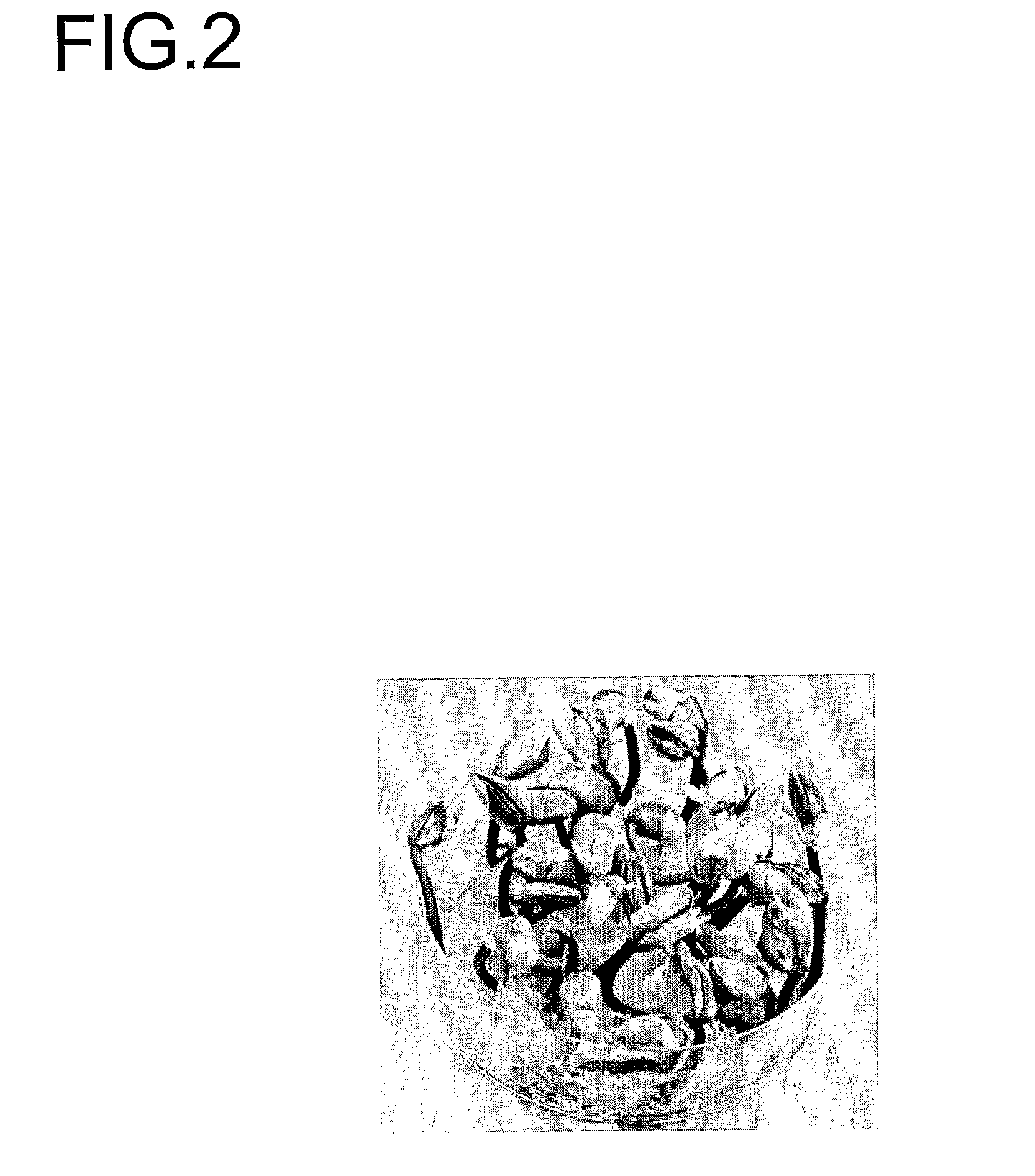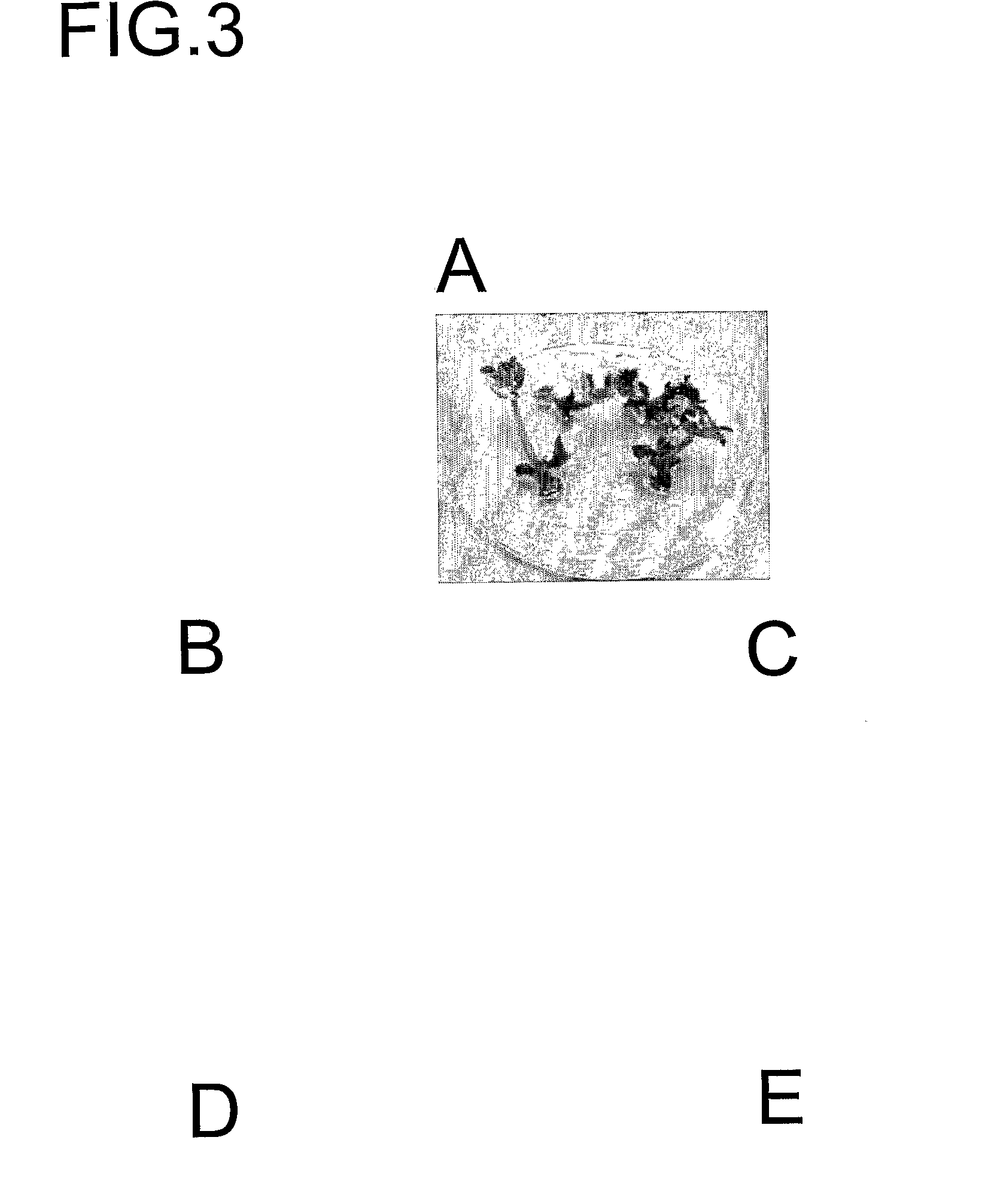Transformation of soybean
a technology of soybean and dna, applied in the field of soybean dna transformation, can solve the problems of additional problems of overcoming, difficulty in conventional plant breeding, and difficulty in dna delivery using particle bombardment, electroporation, etc., and achieve the effect of improving the shoot production in the surviving explant, improving the overall process, and being convenient to us
- Summary
- Abstract
- Description
- Claims
- Application Information
AI Technical Summary
Benefits of technology
Problems solved by technology
Method used
Image
Examples
example 1
Sterilization and Germination of Soybean Seeds
[0376]Virtually any seed of any soybean variety can be employed in the method of the invention. A variety of soybean cultivar (including Jack, Williams 82, and Resnik) is appropriate for soybean transformation. Soybean seeds are sterilized in a chamber with a chlorine gas produced by adding 3.5 ml 12N HCl drop wise into 100 ml bleach (5.25% sodium hypochlorite) in a desiccator with a tightly fitting lid. After 24 to 48 hours in the chamber, seeds are removed and approximately 18 to 20 seeds are plated on solid GM medium with or without 5 μM 6-benzyl-aminopurine (BAP) in 25×100 mm Petri dishes. Seedlings without BAP are more elongated and roots develop, especially secondary and lateral root formation. BAP strengthens the seedling by forming a shorter and stockier seedling.
[0377]Seven-day-old seedlings grown in the light (>100 μM / m2s) at 25° C. are used for explant material for the three-explant types (FIG. 2). At this time, the seed coat ...
example 2
Growth and Preparation of Agrobacterium Culture
[0380]Agrobacterium cultures are prepared by streaking Agrobacterium (e.g., A. tumefaciens or A. rhizogenes) carrying the desired binary vector onto solid YEP growth medium and incubating at 25° C. until colonies appear (about 2 days). Depending on the selectable marker genes present on the Ti or Ri plasmid, the binary vector, and the bacterial chromosomes, different selection compounds will be used for A. tumefaciens and rhizogenes selection in the YEP solid and liquid media. Various Agrobacterium strains can be used for the transformation method (see above and below Example 7).
[0381]After approximately two days, a single colony (with a sterile toothpick) is picked and 50 ml of liquid YEP is inoculated with antibiotics and shaken at 175 rpm (25° C.) until an OD600 between 0.8-1.0 is reached (approximately 2 d). Working glycerol stocks (15%) for transformation are prepared and one-ml of Agrobacterium stock aliquoted into 1.5 ml Eppendor...
example 3
Explant Preparation and Co-Cultivation (Inoculation)
3.1 Method A: Explant Preparation on the Day of Transformation.
[0383]Seedlings at this time have elongated epicotyls from at least 0.5 cm but generally between 0.5 and 2 cm. Elongated epicotyls up to 4 cm in length have been successfully employed. Explants are then prepared with:[0384]i) with or without some roots,[0385]ii) with a partial, one or both cotyledons, all preformed leaves are removed including apical meristem, and the node located at the first set of leaves is injured with several cuts using a sharp scalpel (See FIG. 5).
[0386]This cutting at the node not only induces Agrobacterium infection but also distributes the axillary meristem cells and damages pre-formed shoots. After wounding and preparation, the explants are set aside in a Petri dish and subsequently co-cultivated with the liquid CCM / Agrobacterium mixture for 30 minutes. The explants are then removed from the liquid medium and plated on top of a sterile filter ...
PUM
| Property | Measurement | Unit |
|---|---|---|
| length | aaaaa | aaaaa |
| time | aaaaa | aaaaa |
| length | aaaaa | aaaaa |
Abstract
Description
Claims
Application Information
 Login to View More
Login to View More - R&D
- Intellectual Property
- Life Sciences
- Materials
- Tech Scout
- Unparalleled Data Quality
- Higher Quality Content
- 60% Fewer Hallucinations
Browse by: Latest US Patents, China's latest patents, Technical Efficacy Thesaurus, Application Domain, Technology Topic, Popular Technical Reports.
© 2025 PatSnap. All rights reserved.Legal|Privacy policy|Modern Slavery Act Transparency Statement|Sitemap|About US| Contact US: help@patsnap.com



